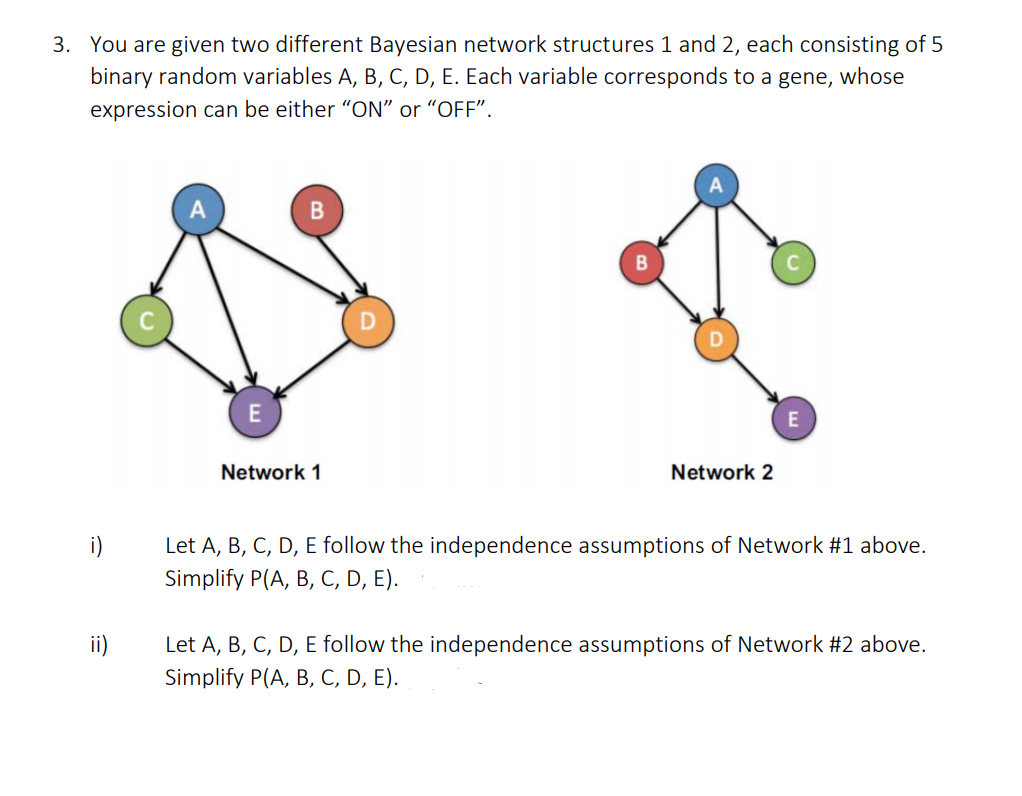Answered step by step
Verified Expert Solution
Question
1 Approved Answer
3. You are given two different Bayesian network structures 1 and 2, each consisting of !5 binary random variables A, B, C, D, E. Each

Step by Step Solution
There are 3 Steps involved in it
Step: 1

Get Instant Access to Expert-Tailored Solutions
See step-by-step solutions with expert insights and AI powered tools for academic success
Step: 2

Step: 3

Ace Your Homework with AI
Get the answers you need in no time with our AI-driven, step-by-step assistance
Get Started


